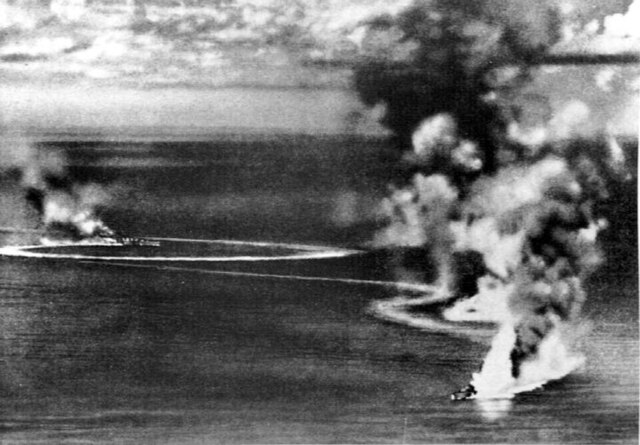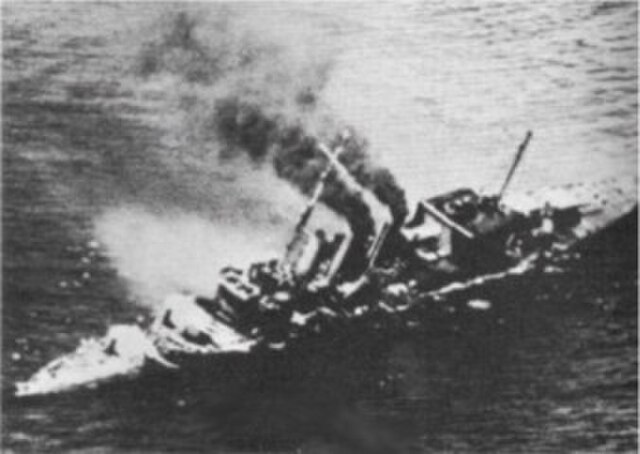The Indian Ocean raid, also known as Operation C or Battle of Ceylon in Japanese, was a naval sortie carried out by the Imperial Japanese Navy (IJN) from 31 March to 10 April 1942. Japanese aircraft carriers under Admiral Chūichi Nagumo struck Allied shipping and naval bases around British Ceylon, but failed to locate and destroy the bulk of the British Eastern Fleet. The Eastern Fleet, commanded by Admiral Sir James Somerville, was forewarned by intelligence and sailed from its bases prior to the raid; its attempt to attack the Japanese was frustrated by poor tactical intelligence.
British heavy cruisers HMS Dorsetshire and Cornwall under Japanese air attack and heavily damaged on 5 April 1942.
The Japanese strike force advancing to the Indian Ocean, 30 March. Ships shown from left to right are: Akagi, Sōryū, Hiryū, Hiei, Kirishima, Haruna, and Kongō. Taken from Zuikaku.
HMS Cornwall burning and sinking on 5 April 1942
Hermes sinking after Japanese air attack on 9 April 1942.
Chūichi Nagumo was an admiral in the Imperial Japanese Navy (IJN) during World War II. Nagumo led Japan's main carrier battle group, the Kido Butai, in the attack on Pearl Harbor, the Indian Ocean raid and the Battle of Midway. He never recovered from the crushing defeat at Midway, and committed suicide during the Battle of Saipan.
Vice Admiral Nagumo (circa 1941–42)
Nagumo (left) with his middle school friend Ichiro Saeki in Seattle, Washington in 1925
Nagumo (front row, center) with the staff of the 1st Air Fleet on Akagi, 10 April 1941 - 14 July 1942
Nagumo in the bridge of Akagi en route to attack Pearl Harbor, 26 November - 7 December 1941








